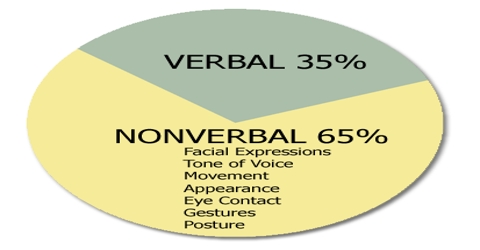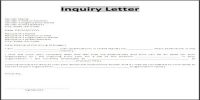Importance and Functions of Non-verbal Communication
Non-verbal communication occurs without using any oral or written word. Instead of written or oral words, it relies on various non-verbal cues like physical movements, tasks, colours, signs, symbols, signals charts etc. to express feelings, attitudes or information. Although no word is used in non-verbal communication, it can effectively communicate many human feelings more accurately than verbal methods of communication. Some important points expressing the importance / necessity /advantages / functions of non-verbal communication are discussed below:
Well expression of the speaker’s attitude: Various non-verbal cues of the speaker like physical movements, facial expression, way of expression etc. play important role in expressing the inner meaning of the messages in face-to-face conversation and interview. For example, facial expression of the speaker indicates his attitude, determination depth of knowledge etc.
Providing information regarding the sender of the written message: The format, neatness, language and the appearance of the envelope used in a written message send a non-verbal message regarding the ‘writer’s tests, choice, level of education etc.
Expression the attitude of the listener and receiver: Sometimes the appearance of the listeners and receivers conveys their attitudes, feelings and thoughts regarding the messages they have read or heard.
Gaining knowledge about a class of people: Clothing, hairstyle, neatness, jewelry, cosmetics and stature of people convey impressions regarding their occupation, age, nationality, social or economic level, Job status etc. For example, students, policemen, nurses etc. can easily be identified through their dresses.
Gaining knowledge about the status of a person: Non-verbal cues also help to determine the relative status of persons working in an organization. For example, room size, location, furnishings, decorations, lightings, etc. indicate the position of a person in the organization.
Communicating common message to all people: In some cases non-verbal rules can effectively express many true messages more accurately than those of any other method of communication. For example, use of red, yellow and green lights and use of various signs in controlling vehicles in the roads.
Communicating with the handicapped people: Non-verbal cues of communication greatly help in communicating with the handicapped people. For example, language of communication with the deaf depends on the movements of hands, fingers and eye ball.
Conveying message to the illiterate people: Communication with illiterate people through written media is impossible. There may also be some situations that do not allow the use of oral media to communicate with them. In such situations non-verbal methods like pictures colours graphs, signs, and symbols are used as the media of communication. For example, to indicate danger we use red sign and to mean dangerous we use a skull placed between two pieces of bone put in cross wise fashion.
Quick expression of message: Non-verbal cues like sign and symbol can also communicate some messages very quickly than written or oral media. For example, when driver of a running vehicle are to be communicated that the road ahead is narrow or there is a turn in the road ahead, we generally use signs or symbols rather than using any written or oral message.
Presenting information precisely: Sometimes quantitative information on any issue may require lengthy written message. But this quantitative information can be presented easily and precisely by table, graph or chart.
















